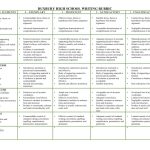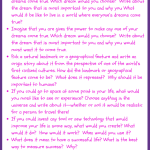Unlock The Magic Of Creative Writing For Grade 1: Igniting Imagination And Unleashing Words!
Creative Writing for Grade 1: Unlocking the Imagination of Young Minds
Greetings, Readers! In this article, we will delve into the exciting world of creative writing for grade 1 students. As children embark on their educational journey, it is essential to nurture their imagination and language skills. Creative writing offers a valuable outlet for self-expression and encourages critical thinking. Let’s explore the importance, benefits, and techniques of creative writing for grade 1 students.
Introduction
1. What is Creative Writing?
1 Picture Gallery: Unlock The Magic Of Creative Writing For Grade 1: Igniting Imagination And Unleashing Words!

2. Who Can Benefit from Creative Writing?

Image Source: pinimg.com
3. When Should Grade 1 Students Start Creative Writing?
4. Where Can Creative Writing Take Place?
5. Why Is Creative Writing Important for Grade 1 Students?
6. How Can Grade 1 Students Engage in Creative Writing?
What is Creative Writing?
Creative writing is a form of artistic expression that allows individuals to convey their thoughts, emotions, and ideas through various writing techniques. It goes beyond the basics of grammar and sentence structure, encouraging students to explore their imagination and develop their unique voice.
🖊️ Creative writing enables students to paint vivid pictures with words, creating engaging narratives that captivate readers.
Grade 1 students can begin their creative writing journey by expressing their thoughts, feelings, and experiences through storytelling, poetry, and descriptive writing. It fosters a love for language and provides a platform for self-discovery.
Who Can Benefit from Creative Writing?
Creative writing benefits not only grade 1 students but individuals of all ages. However, at this early stage, it plays a crucial role in shaping a child’s learning and development. It aids in:
1. Developing language skills: Through creative writing, students enhance their vocabulary, grammar, and sentence structure.
2. Stimulating imagination: Writing stories and creating fictional worlds enable students to think creatively and develop their imaginative capabilities.
3. Expressing emotions: Creative writing offers an outlet for students to express their thoughts, feelings, and experiences in a safe and constructive manner.
4. Building confidence: As students see their ideas come to life on paper, they gain confidence in their abilities and develop a positive attitude towards learning.
5. Enhancing critical thinking: Writing encourages students to think critically and solve problems, improving their analytical and decision-making skills.
6. Fostering empathy: Through writing from different perspectives, students develop empathy and understanding towards others.
When Should Grade 1 Students Start Creative Writing?
The ideal time to introduce grade 1 students to creative writing is when they have developed basic language skills, such as letter recognition, phonics, and basic vocabulary. This usually occurs around the age of 6 or 7. However, each child is unique, and teachers and parents should assess their readiness based on their individual progress.
📅 It is important to remember that creative writing should be introduced gradually and in a supportive environment to ensure a positive experience for young learners.
Where Can Creative Writing Take Place?
Creative writing can take place in various settings, including:
1. Classroom: Teachers can integrate creative writing into their curriculum, providing structured lessons and opportunities for students to explore their creativity.
2. Home: Parents can encourage creative writing by providing a quiet space, writing materials, and engaging prompts for their children to write about.
3. Writing workshops: Enrolling grade 1 students in writing workshops or camps allows them to learn from professional writers and interact with peers who share similar interests.
🏫 Creative writing can take place anywhere that sparks a child’s imagination, be it a park, library, or even during a family trip. The possibilities are endless!
Why Is Creative Writing Important for Grade 1 Students?
Creative writing plays a vital role in the development of grade 1 students. Here’s why:
1. Enhances communication skills: By engaging in creative writing, students learn to express their thoughts and ideas clearly and effectively.
2. Cultivates a love for reading: Writing and reading go hand in hand. Creative writing nurtures a passion for literature and storytelling, fostering a lifelong love for reading.
3. Develops empathy and understanding: Through writing, students explore different perspectives and understand the experiences of others.
4. Sparks imagination: Creative writing allows grade 1 students to unleash their imagination, fueling their curiosity and love for learning.
5. Builds confidence: As students see their writing evolve and receive positive feedback, their self-confidence grows, encouraging them to take on new challenges.
How Can Grade 1 Students Engage in Creative Writing?
Grade 1 students can engage in creative writing through various activities, including:
1. Storytelling: Encourage students to create their own stories, developing characters, settings, and plots.
2. Journaling: Provide students with journals to document their daily experiences, thoughts, and feelings.
3. Poetry: Introduce students to the world of poetry, allowing them to experiment with different poetic forms and express their emotions creatively.
4. Collaborative writing: Encourage students to work together on a story or script, fostering teamwork and creativity.
5. Writing prompts: Provide engaging prompts that stimulate students’ imagination and encourage them to write creatively.
Advantages and Disadvantages of Creative Writing for Grade 1 Students
1. Advantages:
a. Improved language skills: Creative writing enhances vocabulary, grammar, and sentence structure.
b. Development of critical thinking: Writing creatively requires students to think critically and solve problems.
c. Boosted self-confidence: Accomplishments in creative writing build self-confidence and a positive attitude towards learning.
d. Enhanced creativity: Creative writing nurtures imagination, allowing students to think outside the box.
e. Emotional outlet: Writing provides a safe space for students to express their thoughts, feelings, and experiences.
2. Disadvantages:
a. Time-consuming: Engaging in creative writing activities may require additional time and effort.
b. Difficulty in self-editing: Grade 1 students may find it challenging to self-edit their writing for clarity and structure without guidance.
c. Limited vocabulary: Students at this stage may have a limited vocabulary, which can impact the depth of their writing.
d. Overemphasis on mechanics: Focusing too heavily on grammar and spelling can hinder creativity and self-expression.
e. Reluctance to share: Some grade 1 students may be hesitant to share their writing due to fear of judgment or criticism.
Frequently Asked Questions (FAQs)
1. Can creative writing improve grade 1 students’ reading skills?
Yes! Engaging in creative writing enhances grade 1 students’ reading skills by cultivating a love for literature and developing their understanding of storytelling.
2. How can teachers encourage grade 1 students to participate in creative writing activities?
Teachers can encourage participation by providing engaging prompts, creating a supportive environment, and celebrating students’ accomplishments.
3. Are there any specific writing techniques suitable for grade 1 students?
Grade 1 students can benefit from techniques such as brainstorming, storytelling, and using descriptive language to bring their writing to life.
4. Is creative writing only beneficial for future writers?
No, creative writing benefits grade 1 students regardless of their future aspirations. It enhances communication skills, critical thinking, and creativity, which are valuable in various fields.
5. How can parents support grade 1 students in their creative writing journey?
Parents can provide a nurturing environment, offer encouragement, and value their child’s writing by actively listening and providing positive feedback.
Conclusion
In conclusion, creative writing for grade 1 students plays a pivotal role in their educational and personal development. By nurturing their imagination and language skills, creative writing unlocks a world of possibilities and empowers young minds to express themselves confidently. It fosters a love for learning and literature, enhances communication and critical thinking skills, and cultivates empathy and understanding. Encourage grade 1 students to embark on this exciting journey of self-expression and watch as their creativity soars.
Unlock the potential of grade 1 students through creative writing today!
Final Remarks
Thank you for taking the time to explore the world of creative writing for grade 1 students. It is crucial to provide young learners with opportunities to express themselves creatively and develop their language skills. Remember to create a supportive environment that encourages children to explore their imagination and share their writing with pride. Embrace the power of creative writing and witness the positive impact it has on the lives of grade 1 students. Happy writing!
This post topic: Creative Writing

